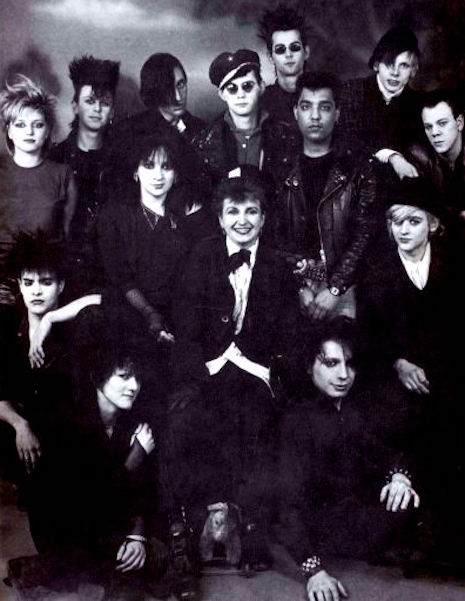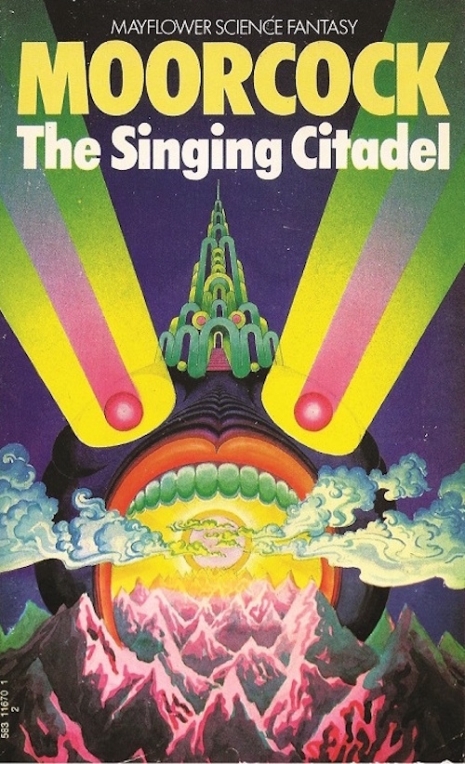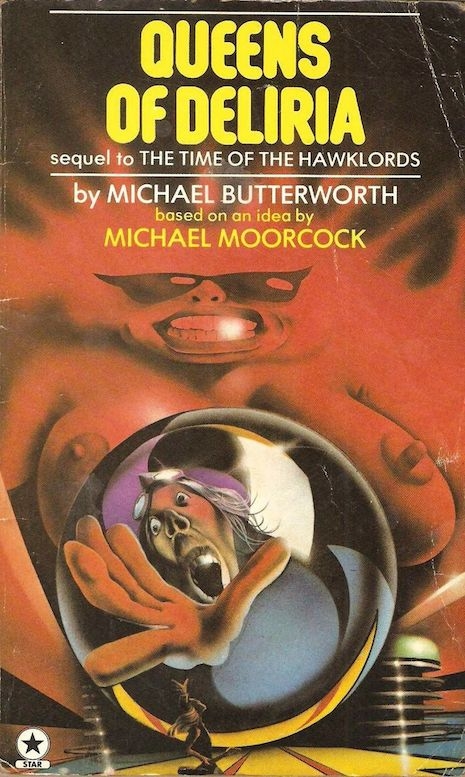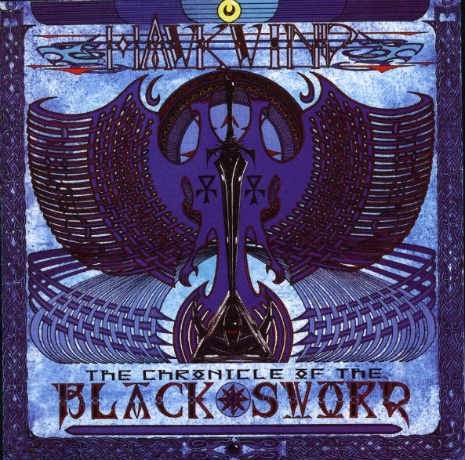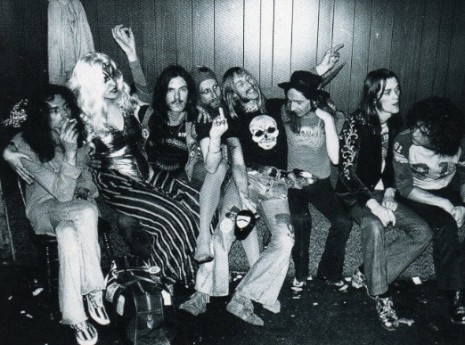
Barney Bubbles cover for Hawkwind’s Space Ritual
When you’re writing on a daily basis about popular—or unpopular—culture, it sure helps if you’ve got a great deal of enthusiasm for the topic at hand. You can’t feel lukewarm because if you don’t care about something, why should you expect your readers to care, right? The whimsical nature of what we cover here at Dangerous Minds does come down to an editorial policy of, well, whimsy on a daily basis. Luckily we’re all enthusiastic people!
Like many of you, I’m on a never-ending quest to find “something new to listen to” or something old that’s “new again” if only because I missed out on it the first time. Right now, the thing I am absolutely off-the-scale enthusiastic about is Hawkwind. I am hoping to share my enthusiasm here with you the reader in the hopes that you’ll get something out of it.
The other day—Monday—I noticed that there was a new-ish (2013) box set of Hawkwind’s Warrior On The Edge Of Time album and that it had been remixed for 5.1 surround by the incomparable Steven Wilson of Porcupine Tree. As I have written here in the past, I’m interested in pretty much everything and anything when it comes to classic albums that have been snazzed up by Mr. Wilson—his name is the mark of quality when it comes to 5.1 surround—even stuff that I normally wouldn’t be that interested in (Yes, Jethro Tull, XTC). That’s not the case with Hawkwind. As soon as I saw that his Warrior On The Edge Of Time existed, via an Amazon recommendation, I couldn’t hit the buy button fast enough. “Assault And Battery” on the human anatomy—my human anatomy—in 5.1 surround as remixed by the one and only Steve Wilson? Count me in.
It arrived the next day—Tuesday—and that evening, after inhaling copious amounts of entertainment insurance (the nice little man who sold it to me called it “Lemon Skunk,” I think, and he said that it was the best weed in the shire!) I sat down in the darkness to let the majesty of Hawkwind’s Warrior On The Edge Of Time LOUDLY wash over me.
Now I should mention that I have not listened to this album in a very, very long time. Don’t get me wrong, I know every note of it but I probably haven’t heard Warrior On The Edge Of Time since 1983. My sense memory of listening to the LP I owned as a teenager is still very strong however, so maybe that’s what had me salivating over the prospects of what the extended audio field of a 5.1 remix could do for such a freaky, wild sounding album.
I was not disappointed.
Hawkwind was/is a band that had to either be recorded live in concert or else live in the studio. They’re hardly a jam band, but to lock into that monolithic Stooges meet Neu! groove would have been impossible to achieve otherwise. The way that Wilson has refashioned Warrior On The Edge Of Time gives the listener an amazing sense of what it would have been like to be IN the studio with them (not in the control room, but standing among them in the studio) and then he takes the weirdo electronic “space rock” noises they were known for—and Nik Turner’s sax—and weaves those distinctive sonics in and out of the 5.1 configuration in a manner that is both trippy as hell, and from a creative standpoint, the choices he made are simply thrilling. The vocal treatments JUMP out of the speakers and hover around you in the room like holograms or ghosts.
It’s really impressive stuff. I was stoned, true, but then again I usually am. These motherfuckers were just… far out. Hawkwind were a group who set out to push the boundaries as far as they could go at a time in history when boundary-pushing was all the rage. They to my ears, are the sole British prog rock group of the 1970s who were looking to Amon Düül II, Can, Neu! and other Krautrockers for inspiration. In that regard, a pretty good argument could be made that Hawkwind are also the missing link between prog and post punk via their influence on groups like Public Image Ltd. or the Psychedelic Furs. And of course there’s that whole Motörhead connection…
It’s kind of strange how low of a profile Hawkwind have in the US. I think most people who have never sampled the wares write them off as a “crazy hippie” band or assume that because Lemmy played bass with them during their classic era that this implies the music must somehow be moronic. Maybe it’s the participation of fantasy overlord Michael Moorcock and the spoken word bits that marks Hawkwind as “music for nerdy boys,” I don’t know. The only people who seem to care about the band stateside seem to be Motörhead fans, whereas YOU, yes YOU THERE listening to Faust reading this, you might find that there is much for you to enjoy, too, in the classic Hawkwind albums.
Have a listen to Hawkwind’s Warrior On The Edge Of Time in stereo and try to imagine how sick it would sound coming out of five speakers and a subwoofer.
The promo film for “Silver Machine” that was filmed for Top of The Pops. This would explain why their amazonian gogo dancer Stacia has her clothes on…
Below, Hawkwind do “Urban Guerilla” and here Stacia is more casual in her attire, you might say…
The terrific BBC documentary on Hawkwind over the decades:
Posted by Richard Metzger
|
03.13.2014
05:44 pm
|
